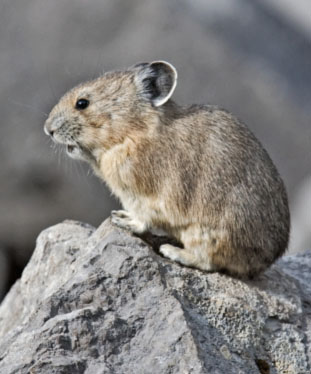|
||
 |
||
|
|
||
|
3 - Pika (Ochotona princeps) Ochotona reached its maximum distribution during the Wisconsin glaciation. Subsequent warming during the mid-Holocene forced the pikas to retreat to higher latitudes and elevations leading to the current disjunct distribution of pikas in the Intermountain West. Most likely, global warming is the cause of the extinction of 7 of 25 pika populations in the Great Basin during the last century. The extirpated populations were formerly living at relatively low elevations and/or talus habitats of small area. Pikas are especially vulnerable to climate change as their habitat is currently restricted to small, disconnected islands of habitat. Pikas generally do not move large distances, and many individuals spend their entire lifespan within a 1km radius. Earlier senescence of vegetation may affect pikas by increased stress, and hotter temperatures during high activity periods can create direct thermal stress for the animals. |